|










|
|

|
Christmas: a festivity |
Luke in his Gospel narrates the birth of Jesus (Luke 2,
1-20). He describes Christmas as a festivity. On her way to Bethlehem
with Joseph, Mary gives birth to her firstborn son in a stable,
because it was not too appropriate to have a baby in the middle
of the common room of a hotel.
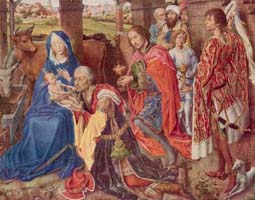
|
She wraps him in swaddling clothes that she brought with her
and lays him in a nearby manger. All went well, it is the boy
everyone was waiting for. Like any birth, this one is lived like
a feast. |
However, here, the character of a feast is underlined by
an envoy from God, an angel, who proclaims it as a "great
joy" to the shepherds who were watching their sheep during
the night: "A savior messiah is born to you " All the
people of Israel were waiting effectively for a messiah, sent
by God. Prophets spoke about him "the people who were walking
in the darkness saw a great light…. Because a child is born
to us, we are given a son…. (Isaiah, 9, 1 and 5)".
Then it is a hope that is happening at last and it is offered
to all, even to the most disadvantaged category of people, like
the shepherds were at that time. To underline the importance
of the event, Luke tells us that the angel is joined by a celestial
army who starts to glorify God before returning back to heaven:
"Glory to God in the Highest and Peace on earth to men He
loves". The ways the evangelists used in writing to show
the heaven that opens up and the humanity not limited to its
condition on earth, compete well with the spectacular effects
used in movies. All were amazed by the shepherds' story after
they saw the child. To add more to it, Mathew (2, 1-12) relates
that magi, informed by the appearance in the sky of a comet,
symbol of an extraordinary event, came from their distant East
with prestigious and expensive gifts to honor the child, gold,
frankincense, and myrrh.
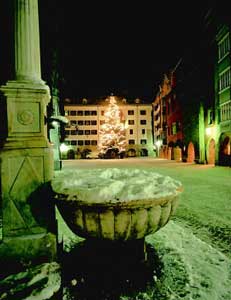
|
Christian tradition projected itself into the popular tradition
that was celebrating the winter solstice to make it the anniversary
of the birth of Jesus. It is the time where things are reversing.
The length of the day is starting to increase. The darkness is
gradually leaving room to light. |
The symbol is meaningful; Christians have retained all
the festivity aspect already present and gave it even more magnificence
for celebrating the birth of the one who calls us, men as well
as women, to the light. No wonder Christmas is made the most
universal of the feasts. It is the feast that lasts the longest:
preparations start in November and the last lights are switched
off end of January. It is prepared a long time in advance because
it needs an appropriate design of garlands and lights. It also
requires a preparation of oneself, an attitude of waiting.
|
The liturgy time preceding Christmas is named Advent; it offers
a time to be prepared. Children know the Advent calendars where
each day one opens a window till Christmas. It is the time of
impatience. |
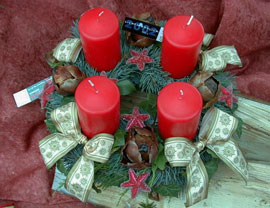
|
Probably for this feast we spend the largest amount of
money in gifts and fine food during the year. It is then only
a commercial business? Not quite. In Christmas there is more
than a materialist Christmas, some thing that goes beyond the
feast and gives a meaning to the desire to rejoice together.
The need to get out of the every day dullness, to make the home
more attractive, to light up one's own city, to see people happy
around us is not only the result of a well-done publicity.
Christmas is mostly a family festivity. In our northern
hemisphere, the season indulges us to stay more indoors rather
than outdoors. Children have a central place at Christmas.
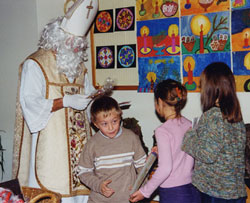
|
The myth of Father Christmas stimulates the desire to offer
what is pleasing and to make a surprise in order to produce the
amazement of the younger and older ones. |
A feast where we enjoy amazement in the warmth of a family
home goes beyond its commercial aspects. The refinement, even
the luxury, are not simply intending to dazzle, but also a way
to express that nothing is too good for a feast, a profound intuition
which prevents desperation, the intuition that nothing is finished,
nothing is lost, that every thing can restart like the birth
of a new born child. A hope that is sitting deep inside our hearts.
The souvenir of a child who maybe has changed the face of the
world is staying more or less in the collective unconsciousness.
Christmas is linked to the marvel, the marvel of the evangelist
text, the marvel of the decorations, of the lights, of the gifts;
the marvel too is of thinking the others, to care for the little
ones, to live a shared love.
|
Is not it a foretaste of the Kingdom that the child Jesus
came to unveil? Then the angel was right to announce a great
joy for every body. |
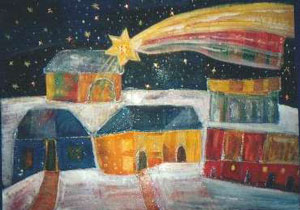
|
|
